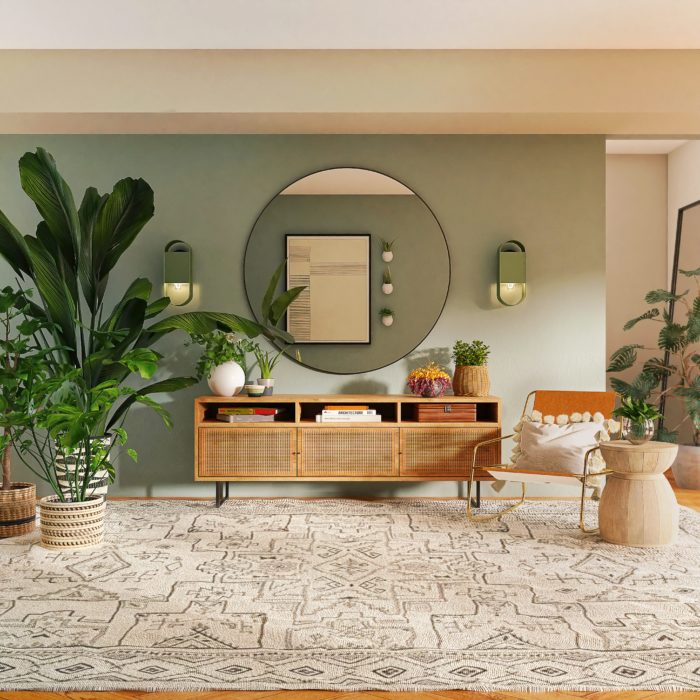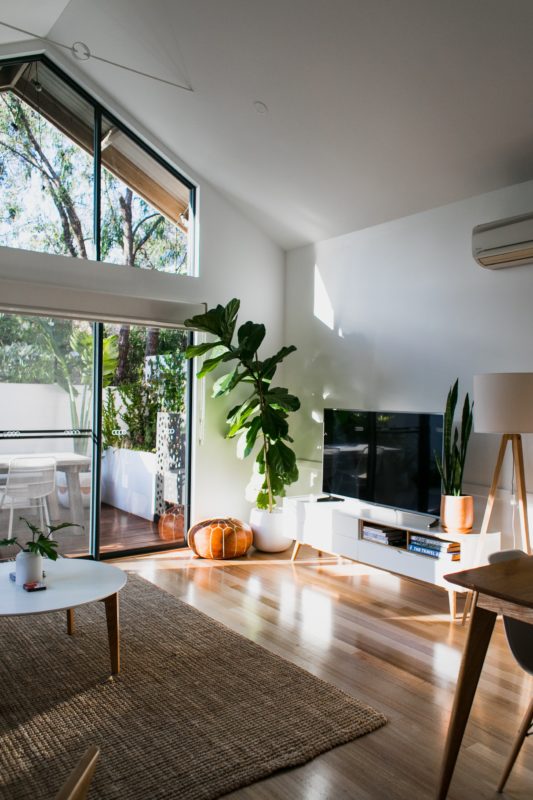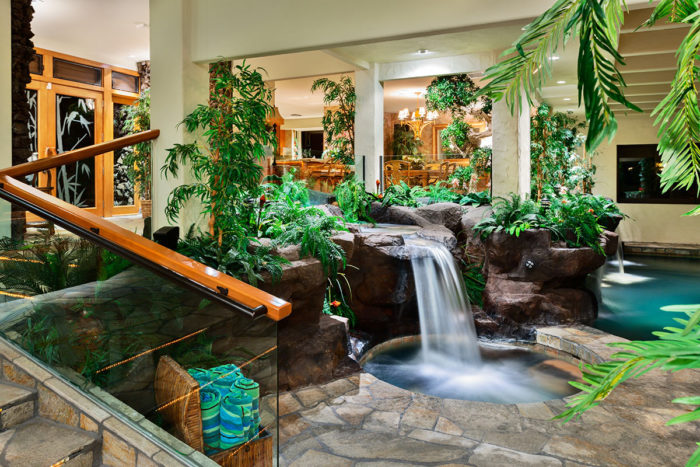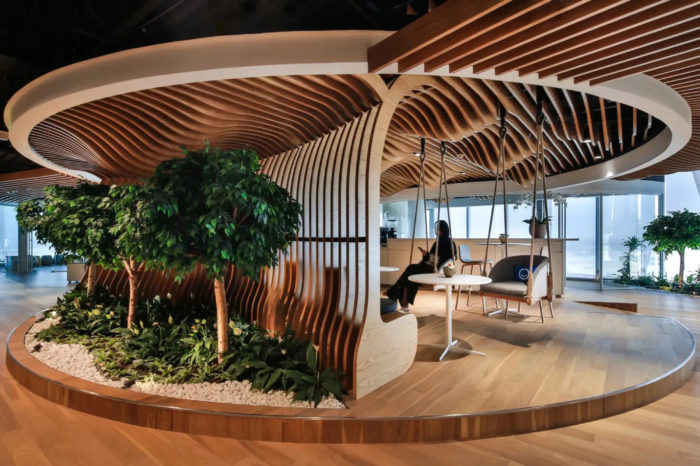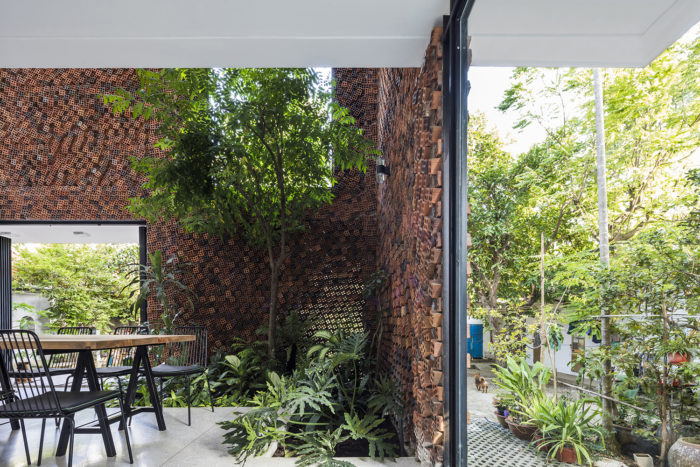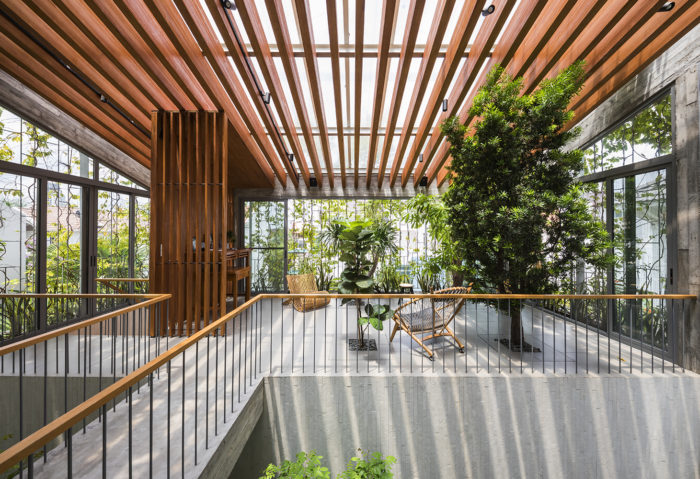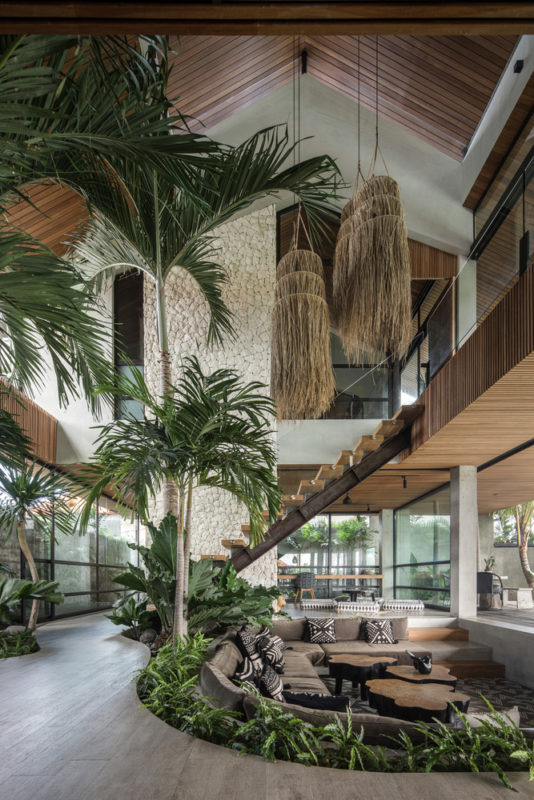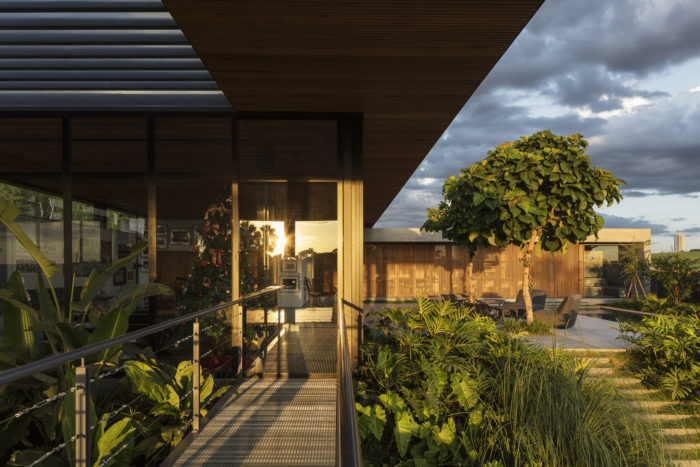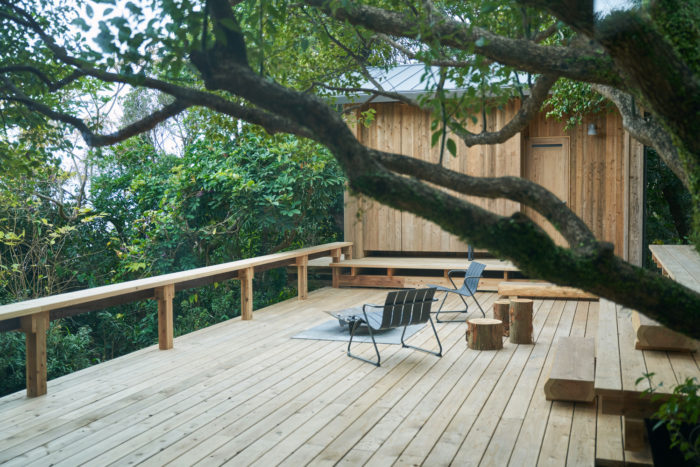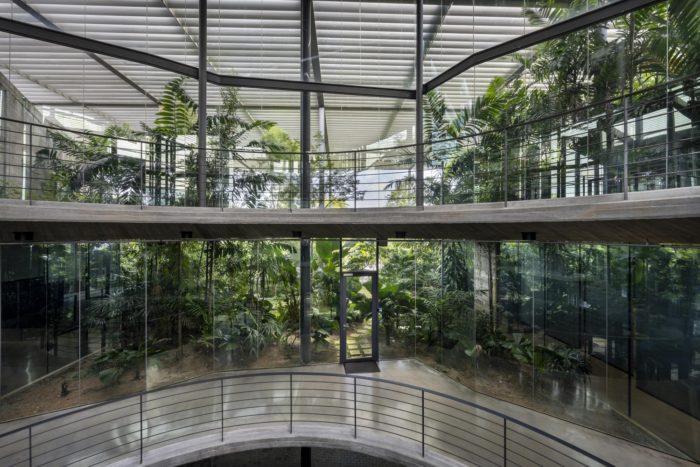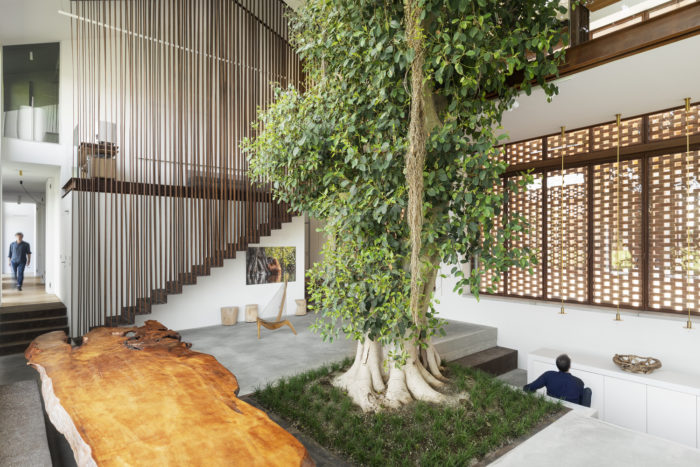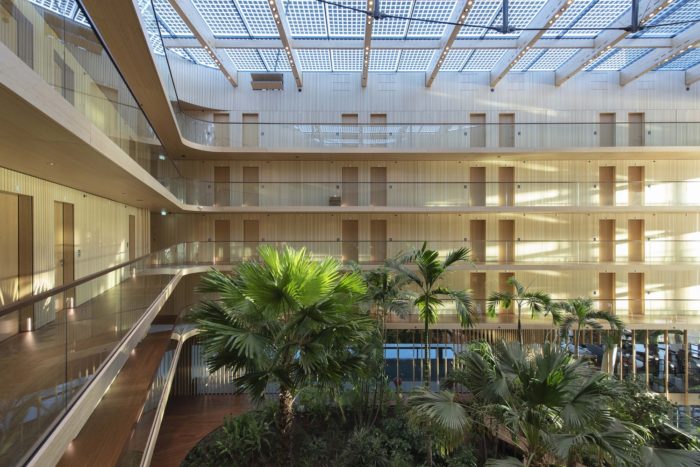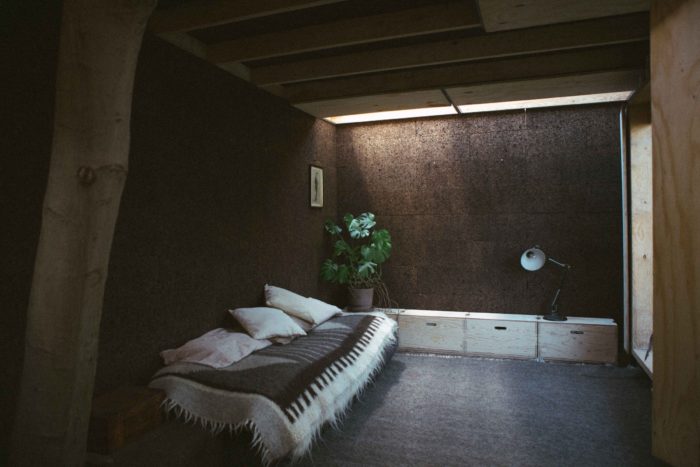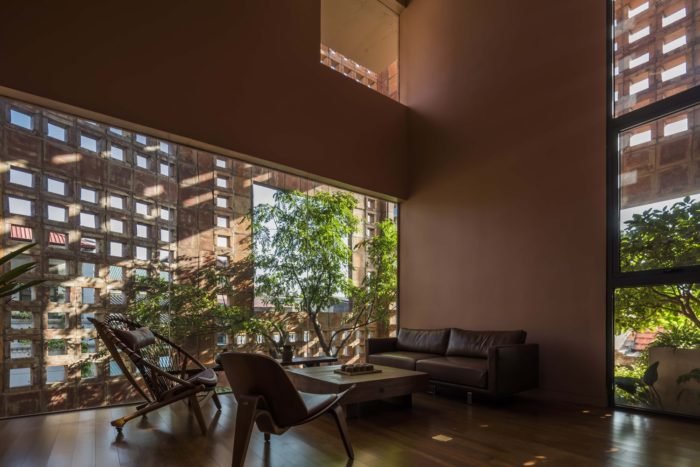10 Alluring Biophilic Interiors That Seamlessly Fuse Architecture and Nature
From the lush greenery of a vertical garden to the calming presence of a trickling water feature, biophilic interiors have the power to transform any space into a tranquil oasis. By seamlessly fusing architecture and nature, these charming biophilic interiors evoke a sense of awe and wonder, inviting us to reconnect with the natural world and experience the therapeutic benefits of being surrounded by greenery. Whether you’re looking to create a peaceful retreat at home or a welcoming environment in your office, these biophilic designs are sure to inspire and delight you.
Biophilic Interiors’ Most Common Characteristics
Biophilic design is an approach that seeks to restore a sense of harmony between humans and their natural surroundings. Due to decades of mutual support, humans have an innate desire to commune with their natural surroundings. Research has proven that Biophilic Interiors improve the health of building inhabitants and foster a more productive work atmosphere.
Buildings with Biophilic Interiors aim to boost the well-being of their inhabitants by including elements like sunlight, airflow, and landscaping. Biophilic design, which takes biophilia’s ideals one step further by incorporating elements of nature into artificial spaces, is a growing field of study. Let’s take a deeper dive at some concepts that distinguish biophilic interiors.
- Indoor Plants
Plantings are a time-honored method of bringing the outdoors indoors. It is also an excellent method for making human-friendly, biophilic interiors. Plants have been shown to have a calming effect, enhance comfort, lift spirits, and hasten recovery. Bringing plants indoors strengthens the bond between inhabitants and the natural world.
- Pure Sunlight
One of the most prominent characteristics of biophilic interiors is incorporating natural illumination into indoor areas. Skylights and open windows onto a patio or garden are two great ways to let natural light into your home’s interior. The body’s circadian cycle is regulated, and moods are lifted when exposed to natural light. Natural light brings the outside inside, fostering a sense of biophilia by simulating the experience of being in the midst of nature.
- Employing Water Elements
Easy access to water has been linked to lower heart rate and blood pressure, enhanced focus and awareness, calmer states of mind, less anxiety, a more emotionally receptive and forgiving personality, and even better memory. Humidifying the air with water can also make a space more comfortable. Including water features inside a building gives it a more natural appearance and calms the atmosphere. A few examples of biophilic interiors are fountains, waterfalls, and water features installed on walls.
- Sound-Based Enhancers
Nature’s noises have long been known to calm and comfort humans. This is why nature sounds like birds singing or waves lapping against rocks, which can be soothing and put people to sleep. Auditory inputs in environments enrich people’s multisensory perception.
- Utilization of Organic Sources
The biophilic design emphasizes the use of organic, easily accessible materials. Connecting the internal and outdoor spaces through the use of naturally occurring materials. Materials like wood, stone, bamboo, and straws achieve a biophilic design well. The materials’ ability to mimic their natural surroundings partly achieves this aesthetic effect.
Some Alluring Biophilic Interiors
Biophilic design aims to eliminate stress and boost productivity, as we discussed. Biophilic design aims to maximize human health and happiness by reducing the psychological and physiological stress caused by prolonged isolation from nature. Here are eight examples of biophilic design that may hopefully spark ideas for your house renovation.
1) Wall House l Creative Architects
The Vietnamese Wall House, constructed from hole-punctured bricks, features an open space in its center that evokes the atmosphere of a courtyard. CTA, based in Ho Chi Minh City, put some lush greenery around the room’s edges to make it feel more like a green space. The studio used the hole-punctured bricks to construct a home that could operate on its own around the clock by increasing the amount of natural light and greenery within the house.
2) Stepping Park House l VTN Architects
The focal point of Stepping Park House, a three-story residential development, is a giant, diagonally-cut atrium. Each level features natural lighting plants and trees to foster a closer relationship with the park next door.
3) Cala Saona House l Biombo Architects
You can see the jungle-inspired inspiration for the design in this family villa’s internal tropical garden. Biophilic design is also present in natural airflow because it is made mainly of glass and can be opened entirely to the outdoors.
4) Ribeirão Preto Residence l Perkins+Will
The architects at Perkins+Will drew on biophilic aesthetics when they built this home in Ribeiro Preto, a city in southeastern Brazil. Its green roof and wooden screens create a seamless transition between indoors and outdoors.
5) Sumu Yakushima Regenerative Residence l tono Inc.
Tsukasa Ono, the architect of this cooperative housing development, wanted to minimize adverse effects on the surrounding environment. Using “regenerative architecture,” Ono rethought how buildings should relate to their natural surroundings. The burnt surfaces of the timber piles used in the construction of Sumu Yakushima encourage the growth of mycelium (fungal threads), promoting the establishment of tree roots and helping to improve the soil.
6) Factory in the Forest l Design Unit Architects Snd Bhd
The biophilic design principles in Factory in the Forest are well on display. The location, defined by a green courtyard and canopy-style structure, was designed to bring people closer to nature.
7) Greenary Residence l Carlo Ratti Associati
A 10-meter-tall Ficus tree is the focal point of the Greenary’s living area; designers Carlo Ratti and Italo Rota included the tree to blur the lines between the natural and artificial. In the countryside beyond Parma is a farmhouse and granary built to be a permanent residence. The tree is a focal point inside and out, thanks to a full glass southern wall.
8) Hotel Jakarta / SeARCH
The main lobby of the Amsterdam Hotel Jakarta is adorned with a lush, subtropical indoor garden illuminated by an abundance of sunlight. The hotel’s unusual thirty-meter-high wooden main structure is defined by its translucent glass exteriors, only one of many environmentally friendly elements. Because of the glass-on-glass connection, the timber curtain wall is visible throughout the building.
9) The Cork Studio l Studio Bark
The nearly-complete use of biodegradable, recyclable, and compostable cork in the building of the Cork Studio makes it an environmentally responsible choice. The building, constructed from waste granules from a wine cork maker, was designed to mimic the look and feel of a treehouse because it was built around an oak tree that already stood on the property.
10) Bat Trang House l VTN Architects
Bat Trang House features a ventilated ceramic brick skin, and its terraced gardens serve as a natural cooling system. The voids in the ceramic case allow air to circulate. These help move air throughout the house, while the partially or evident plants through the openings act as a “buffer zone” to keep the house’s interior at a comfortable temperature.
In conclusion, biophilic design has proven to be a practical approach to creating beautiful and functional biophilic interiors that enhance the connection between humans and nature. The ten gorgeous biophilic interiors highlighted in this article showcase the seamless fusion of architecture and nature, creating spaces that are aesthetically pleasing and promote health and well-being.
Whether incorporating green walls, natural light, or natural materials, these designs demonstrate the power of biophilic design to transform indoor spaces into a harmonious extension of the natural world. As architects and designers continue exploring biophilic interior possibilities, we can look forward to more inspiring and captivating biophilic interiors that bring us closer to nature.
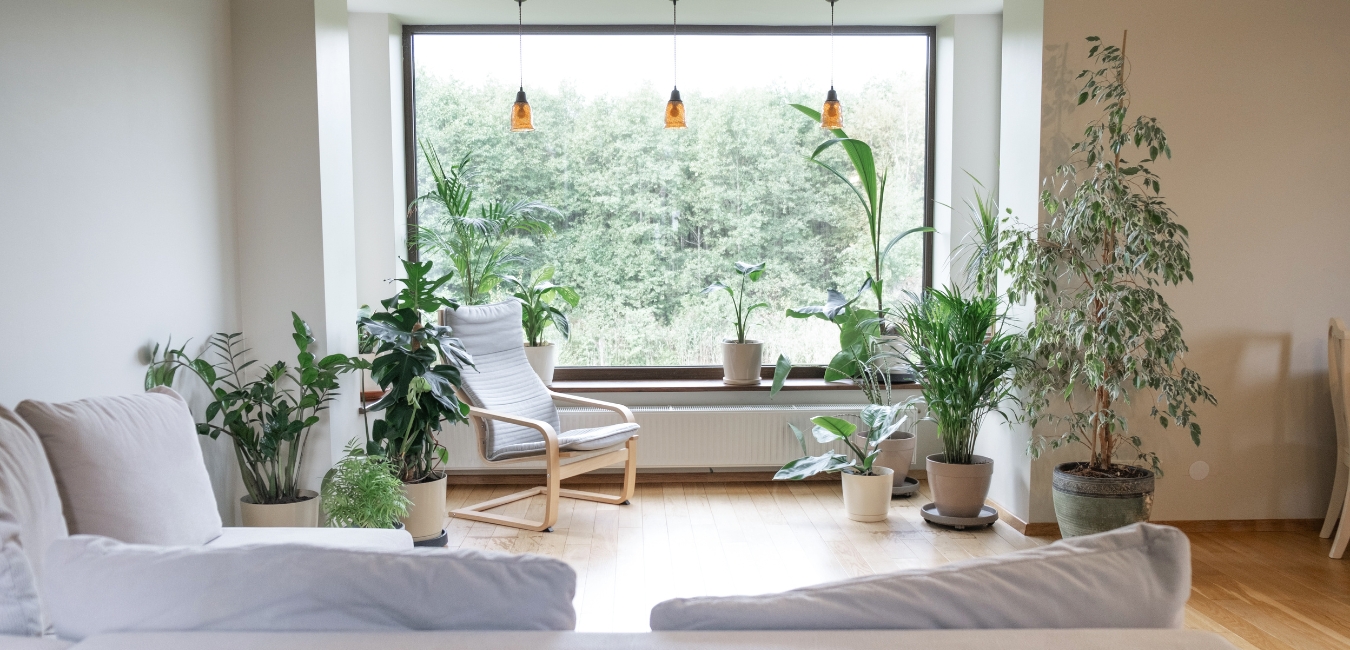
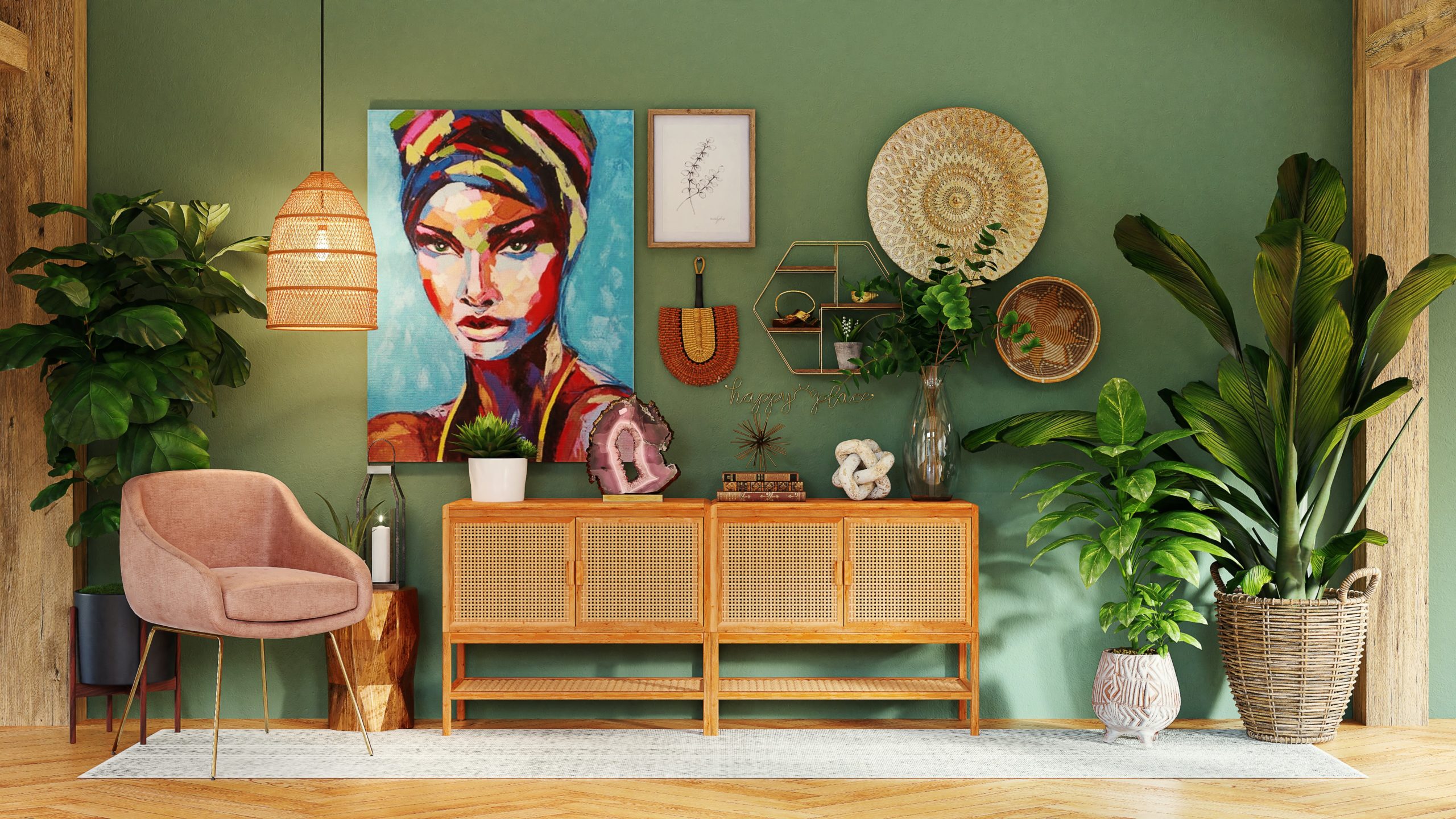
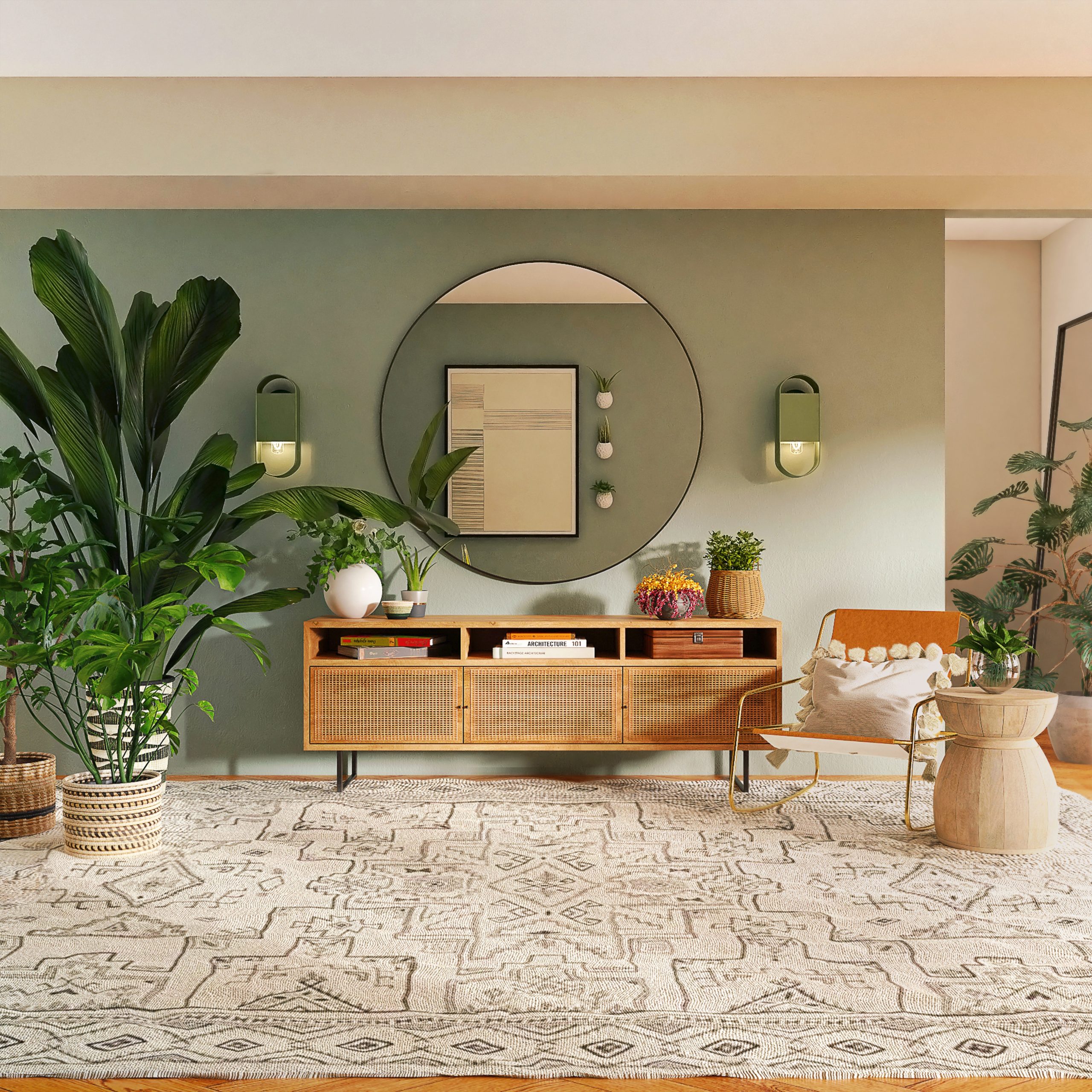
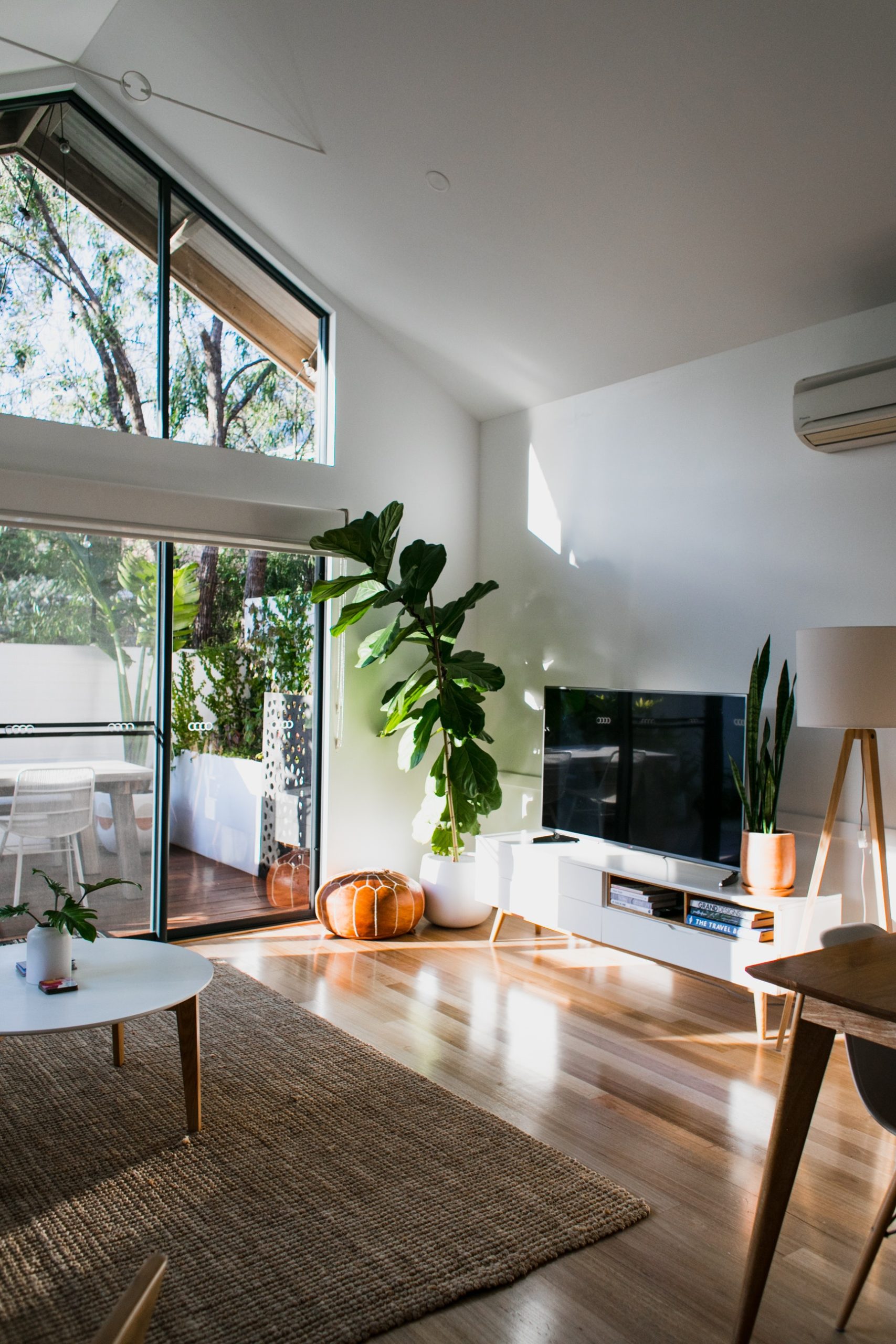
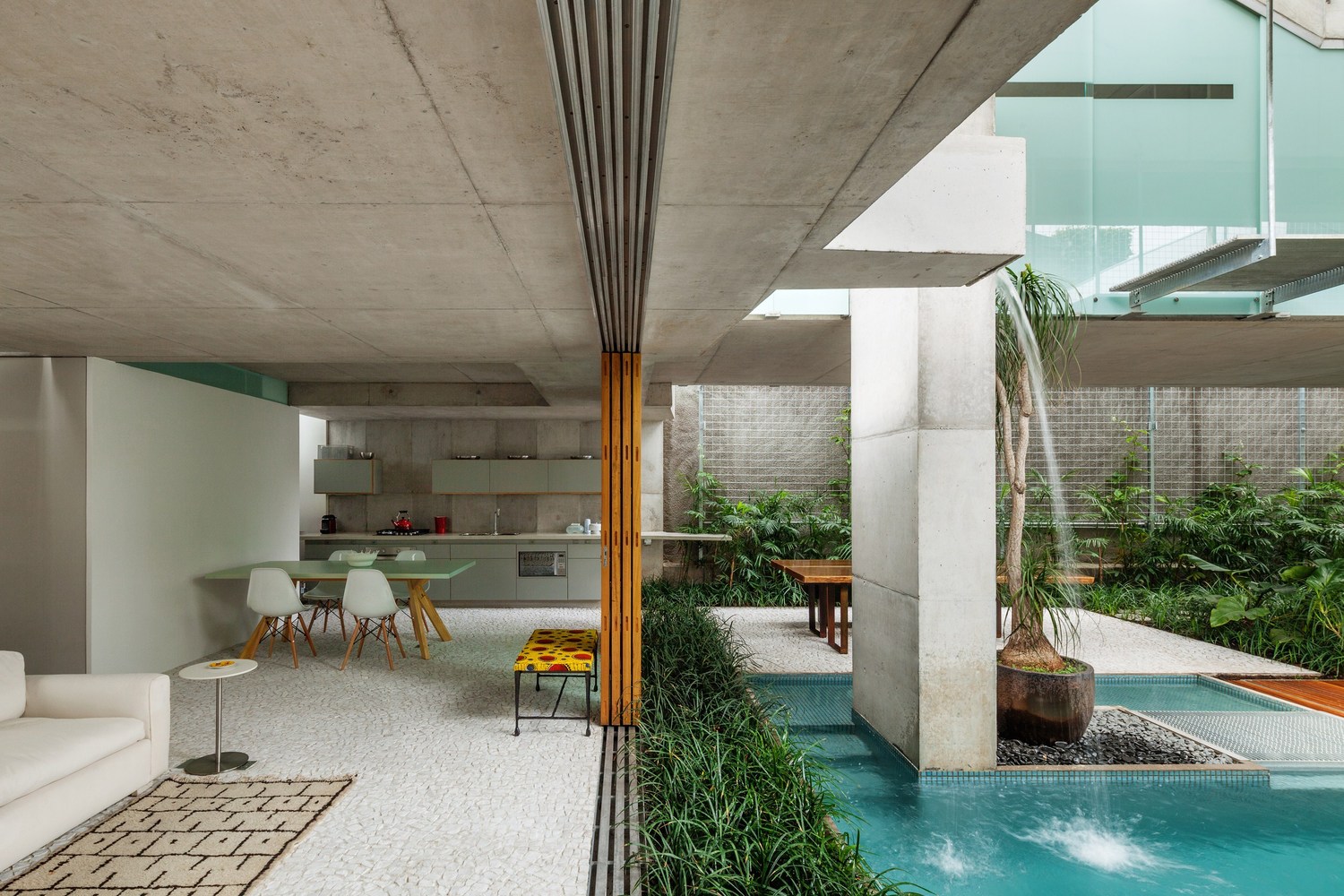
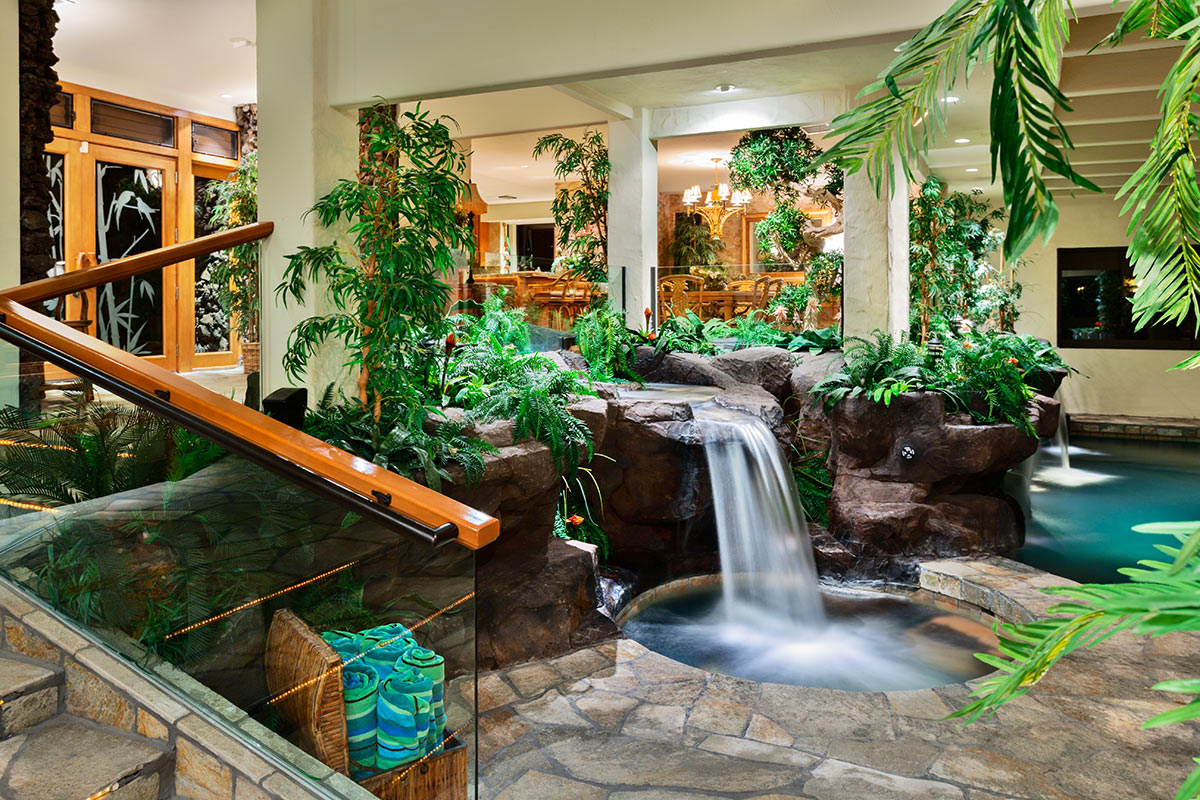
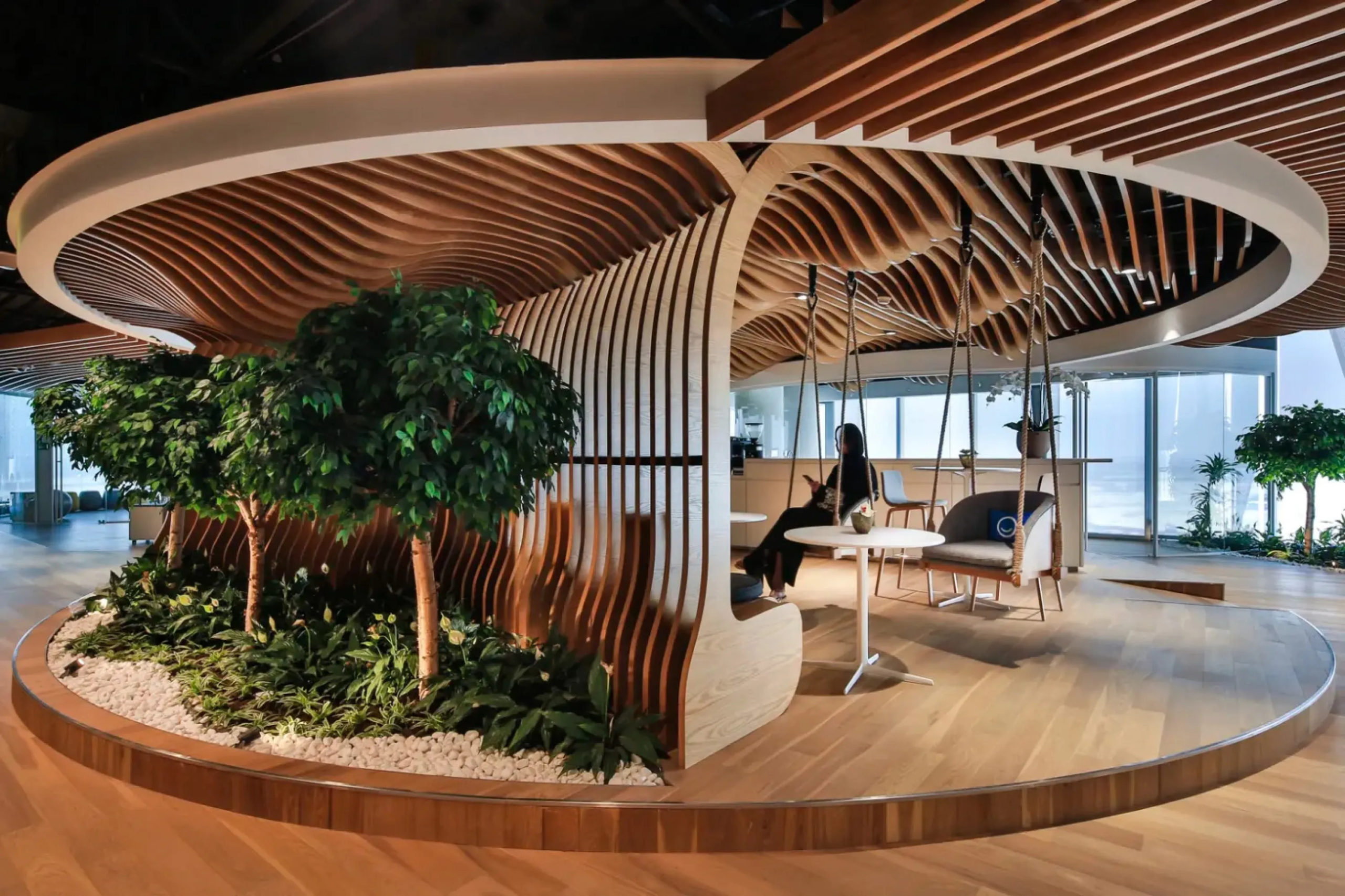
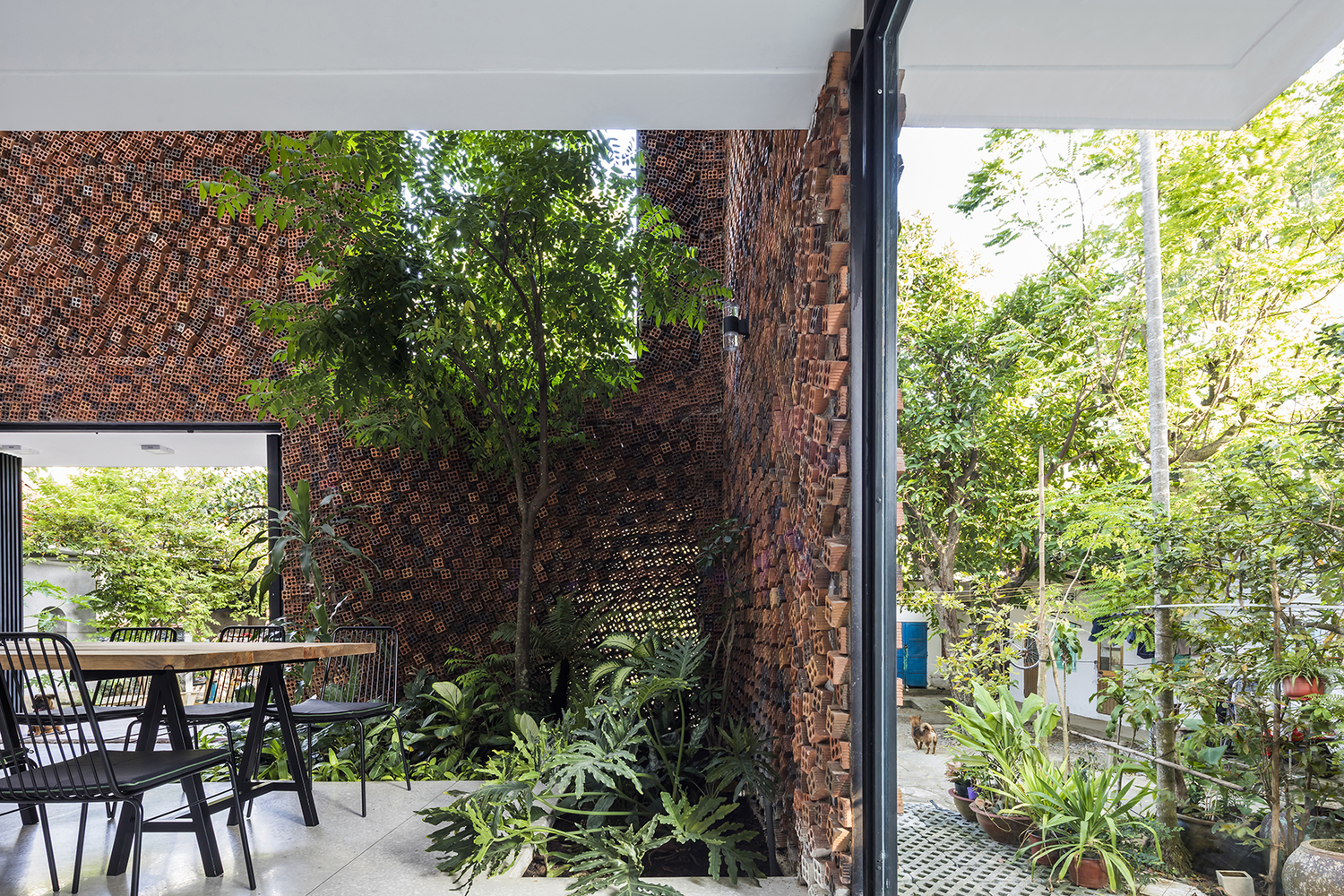
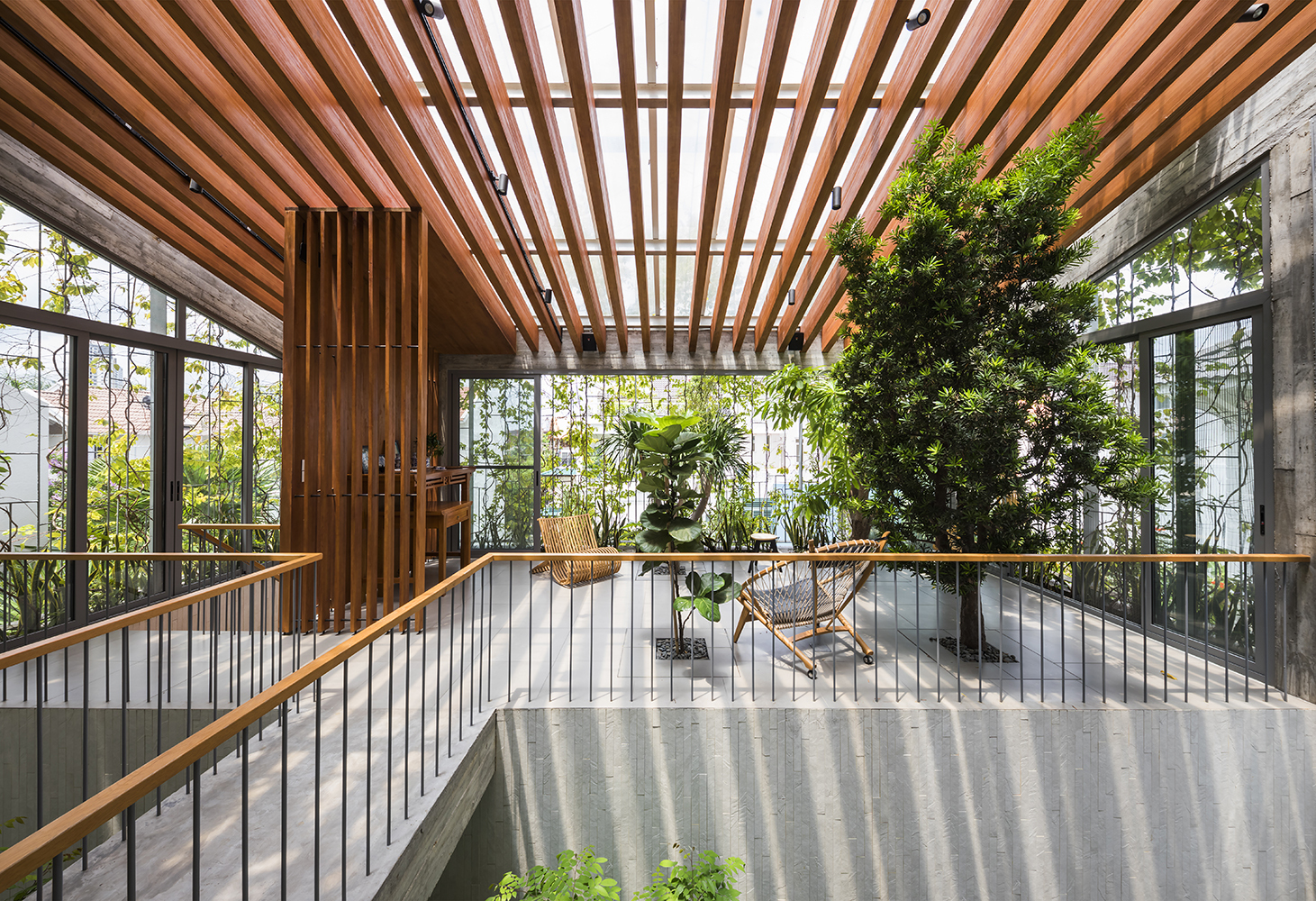
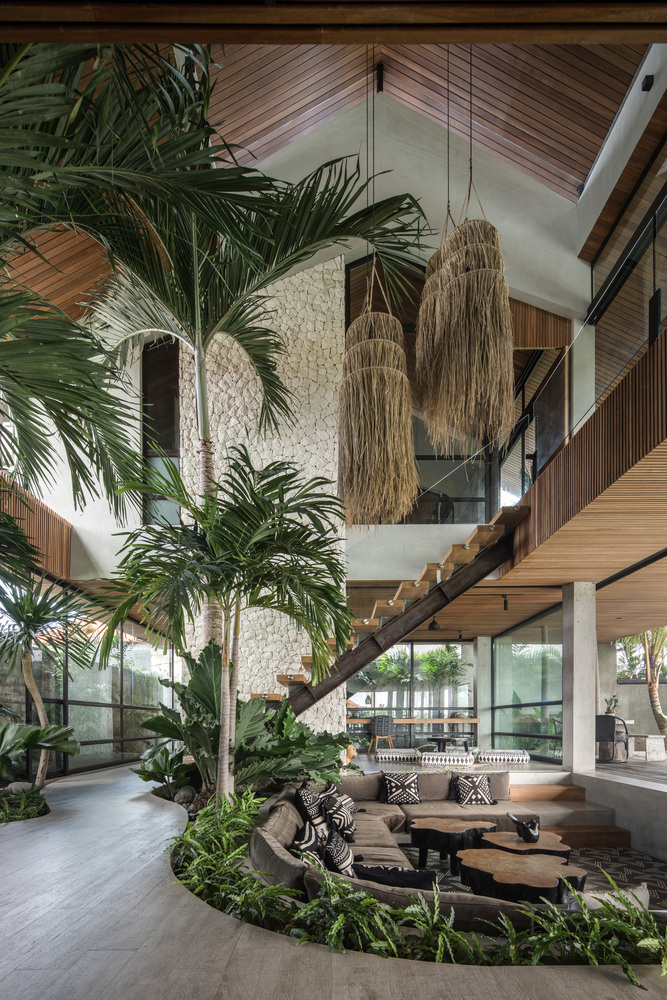
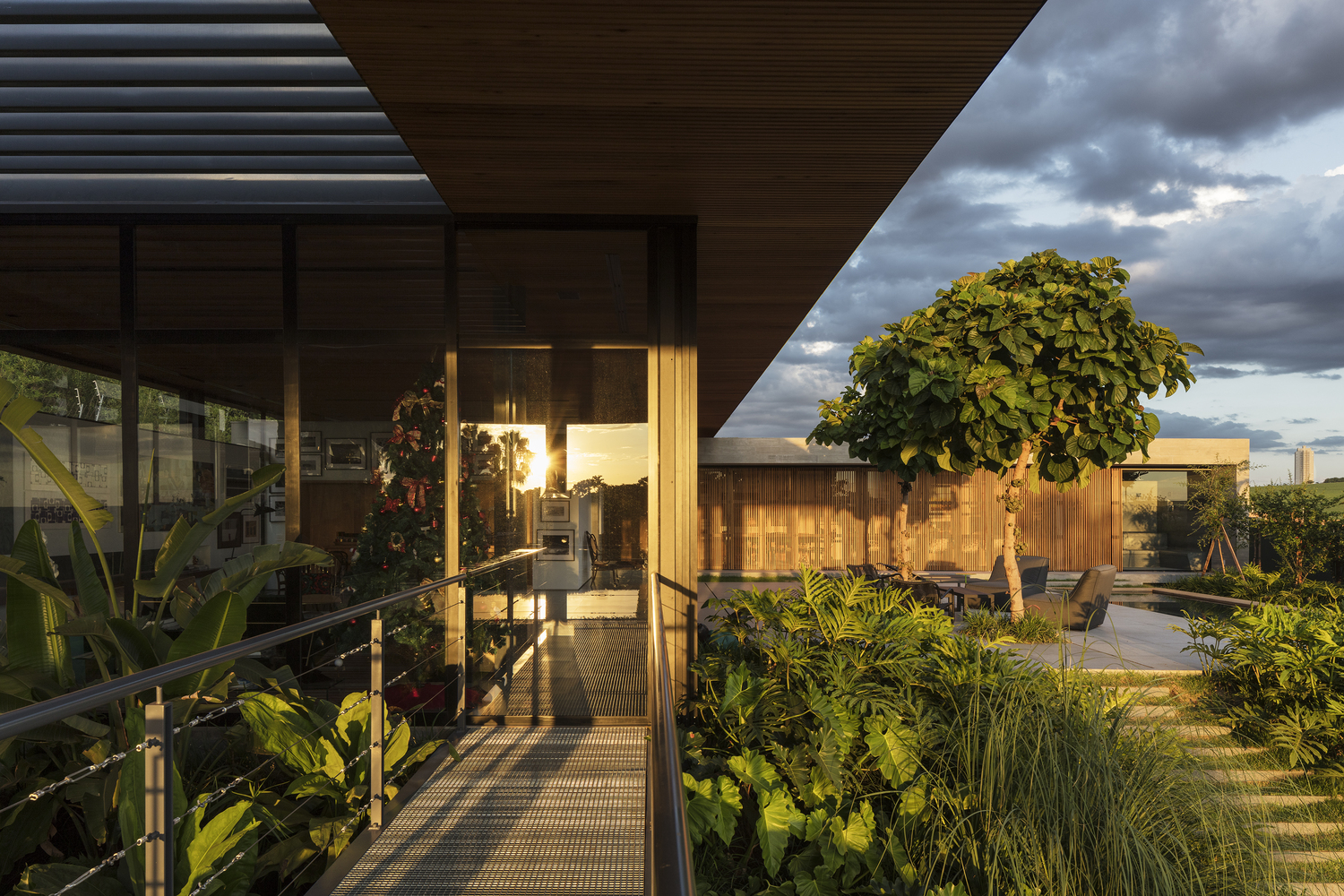
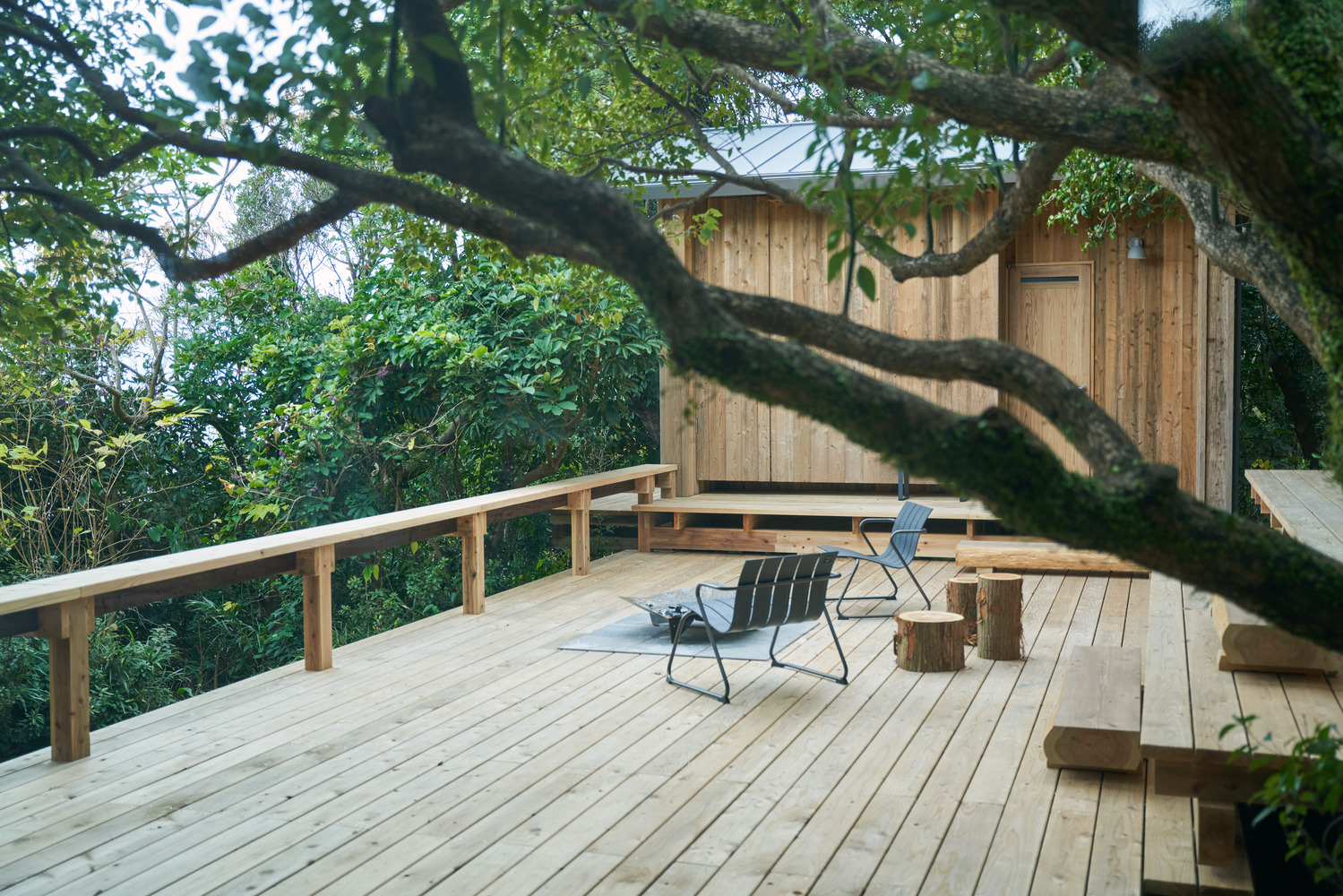
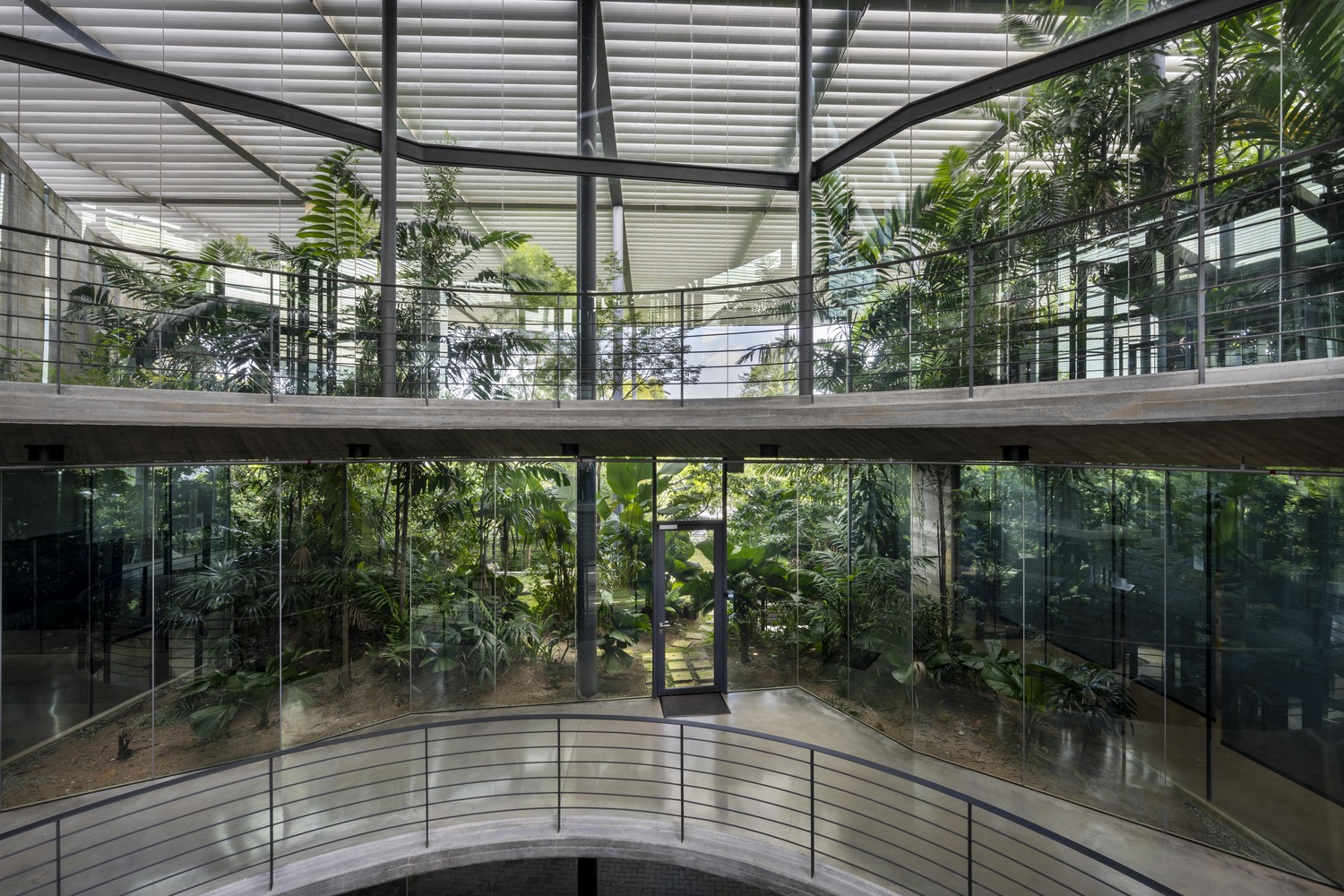
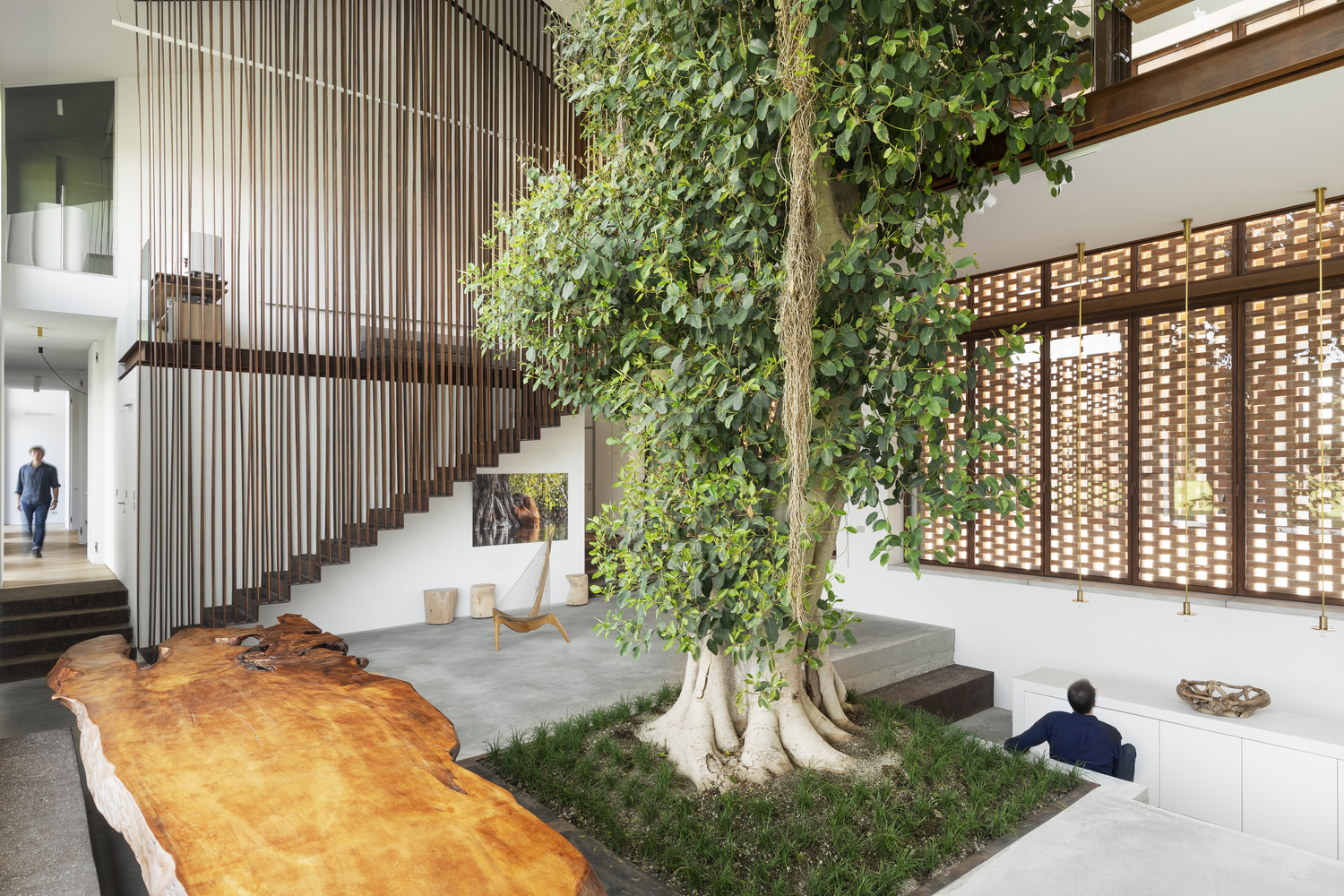

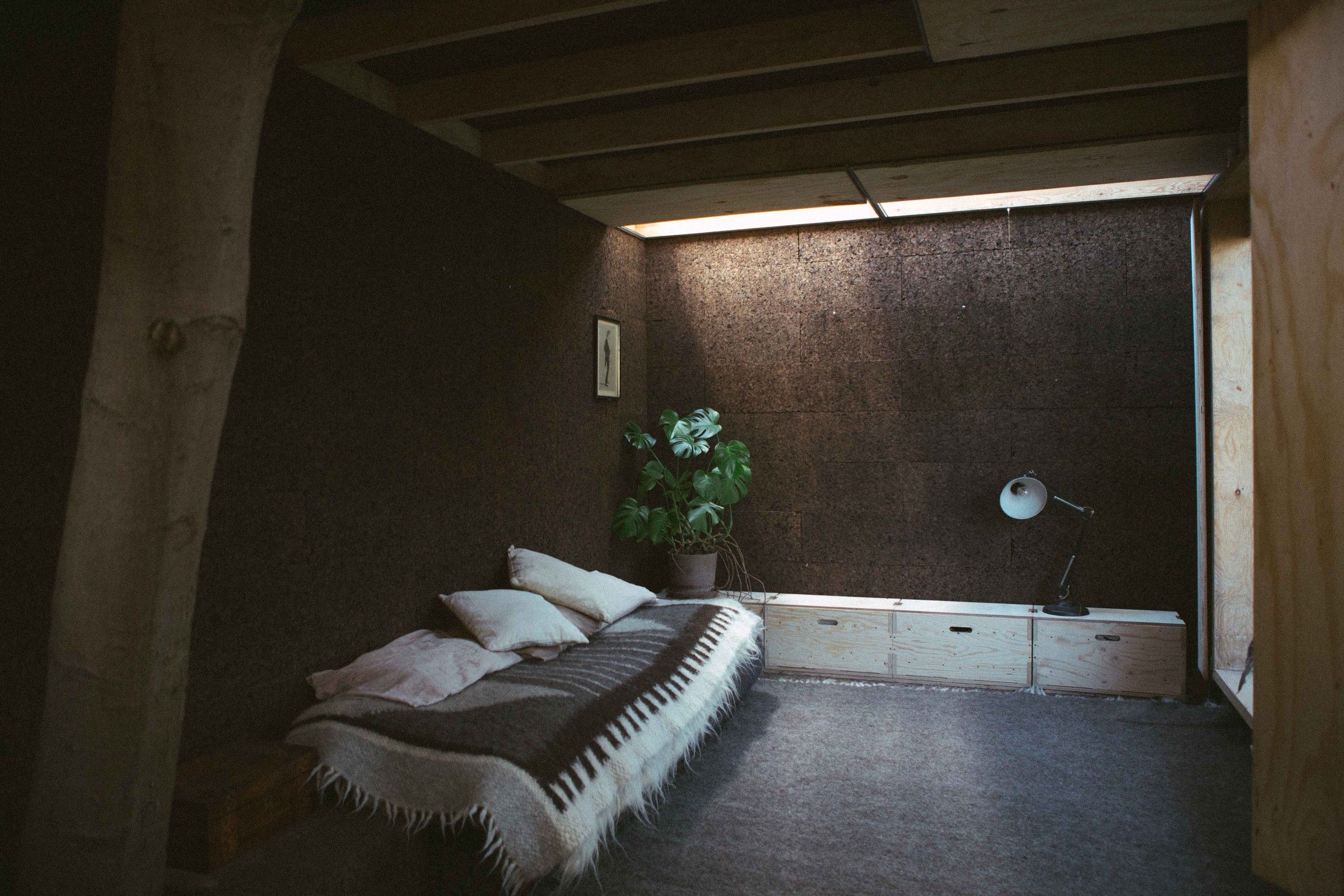
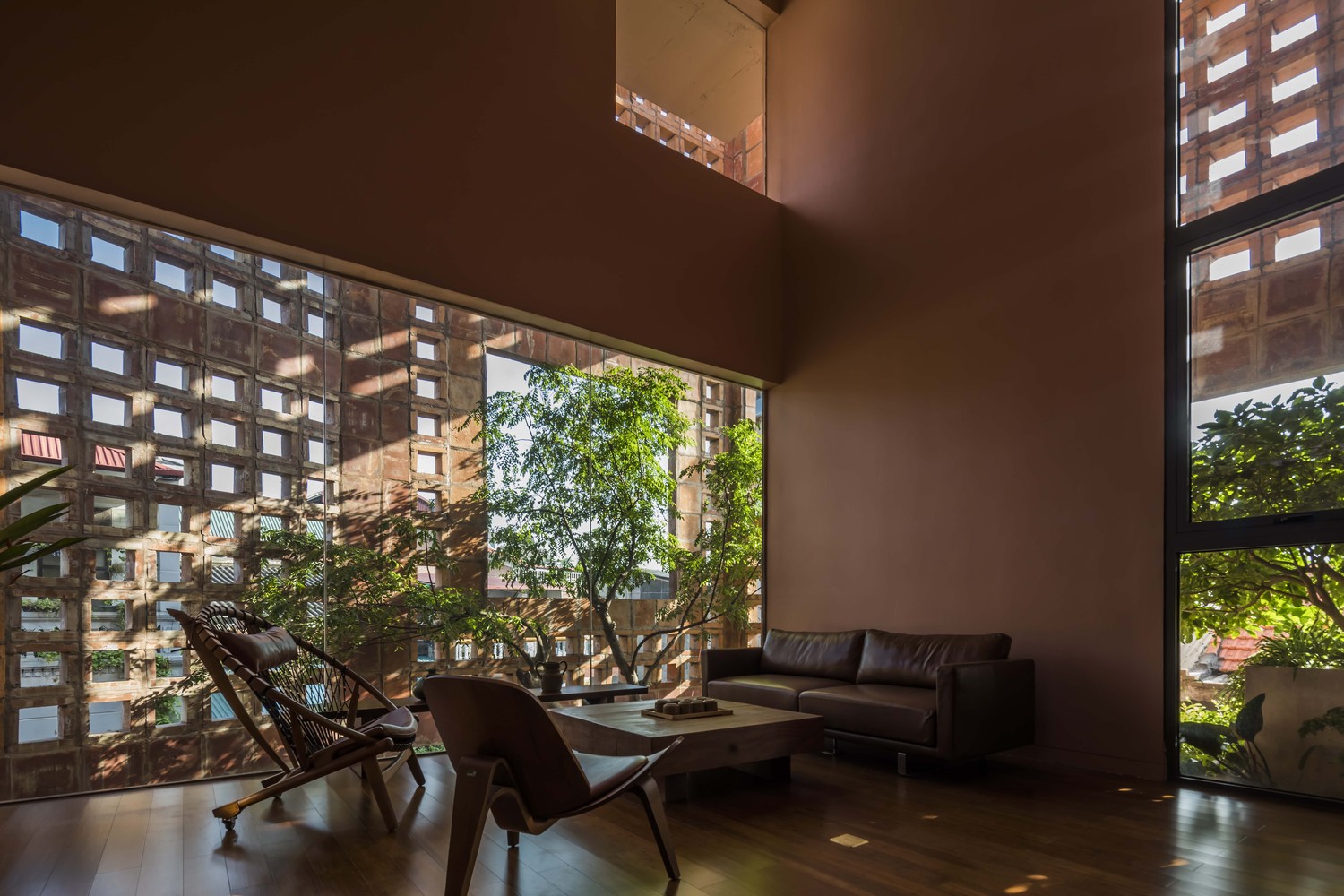
Tags: ArchitectureBiophiliaBiophilic DesignFSGreen HomeHiroyuki OkiInterior ArchitectureInterior DesignSustainability
Aly Bayoumi is an editor with a sharp eye for detail and a deep commitment to clarity and precision. Passionate about architecture and design, he sees every project as an opportunity to shape compelling narratives that bring creative visions to life. With a focus on accuracy and engaging storytelling, Aly combines editorial expertise with a dedication to elevating the voices and ideas that shape the built environment.



